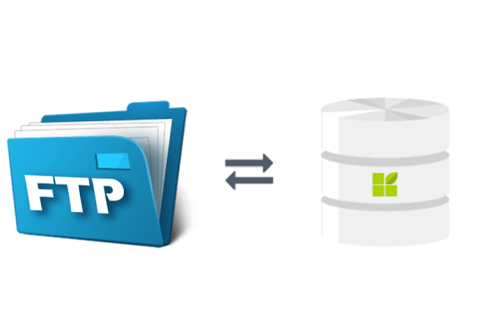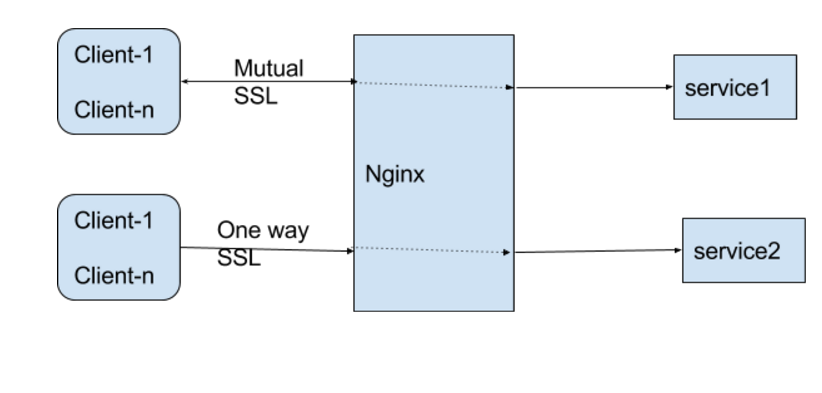
Web servers allow data exchange between computers and the Internet. They run software that controls which files are delivered to users. They are a great example of a client/server relationship. Web server software and hardware must be installed on every computer hosting a website. Web servers can also be called "servers" in some cases.
Concurrency
Scaling your web app is all about how much concurrency a server can handle. It is important for you to understand that your site's performance is determined not by front-end productivity, but rather the number of concurrent visitors. The optimal resource allocation for a site is determined by web servers using estimates of concurrent user counts. If the estimate is not accurate, your application may slow to a crawl.

Configuration
Configuring web servers is crucial in creating a secure and efficient web hosting environment. Administrators should be extra cautious when configuring servers. Many network services are part of typical configurations.
GET method
The GET Method is recommended if you need to send data via a webserver. This method is cacheable, unlike the POST. It allows you to send large data sets and ASCII data. It is not recommended for sensitive information like images and word documents. There are some drawbacks to the GET system. One is that it does not work with many firewalls. It can take a while to upload large binary file.
Nginx
Nginx is a lightweight, high-performance web server. It's an ideal choice for websites with high traffic. However, Nginx has some limitations. It doesn't allow you to specify a directory for your configuration file system. Instead, it configures itself based on the different requests.

Apache
Apache is an Apache web server, which allows you to create multiple websites and manage them all from the same server. This web server supports many languages and has many open source modules that you can add to make your website more powerful. It can be used on a variety of operating systems, including Unix, Linux and Microsoft Windows.
FAQ
Should I hire someone to design my website or do it myself.
If you're looking to save some money, don’t pay for web designing services. However, if you are looking for high-quality results, hiring someone to design your website might not be worth it.
It is possible to create websites without hiring expensive professionals.
If you're willing to put in the time and effort, you can learn how to make a great-looking site yourself using free tools like Dreamweaver and Photoshop.
It is possible to outsource your project to a freelance web developer, who will charge by the hour rather than per-project.
What is a website static?
A static site is one that stores all content on a server. Visitors can access the website via web browsers.
The term "static” refers the fact that there is no dynamic feature such as changing images or video, animations etc.
This site was originally designed for intranets. However, it has been adopted by small businesses and individuals who need simple websites with no custom programming.
Static sites have become increasingly popular because they require less maintenance. They are simpler to update and maintain than fully-featured websites that have many components (like blogs).
They load also faster than their dynamic counterparts. This makes them ideal for users on mobile devices or those with slow Internet connections.
In addition, static sites are more secure than their dynamic equivalents. There's nothing to hack into a static website. Hackers can only access the data contained in a database.
There are two main ways you can create a static web site.
-
Using a Content Management System (CMS)
-
Create a static HTML web site
It all depends on what you need. I recommend a CMS if you're just starting to create websites.
Why? Because you have complete control over your website. You don't even need to hire someone for help setting up your CMS. Upload files directly to the CMS.
You can still learn code and create static sites. It will take some time to learn to program.
Is it more likely to be hired as a web developer if I have a good portfolio?
Yes. A portfolio is essential when landing a web designer or developer job. Portfolios should showcase examples of your skillsets and experience.
A portfolio usually consists of samples of your past projects. These samples can show off your ability to do any task. You should have everything in your portfolio, including mockups.
Can I build my website using HTML & CSS?
Yes! If you've read this far, you should now know how to create a website.
After you have learned how to structure a website, you will need to know HTML and CSS.
HTML stands for HyperText Markup Language. It's like creating a recipe for a dish. You'd list the ingredients, instructions, along with directions. HTML can also be used to inform a computer if certain parts of text should appear bold, underlined and italicized. It's the language of documents.
CSS stands for Cascading Stylesheets. It's like a stylesheet for recipes. Instead of listing every ingredient and instructions, you create general rules about font sizes, colors, spacing and other details.
HTML tells a browser how to format a webpage; CSS tells a browser how to do it.
If you don't understand either of those terms, don't fret. Follow the tutorials below, and you'll soon be making beautiful websites.
How much does it cost to build a website?
The answer depends on what you are trying to achieve with your website. Google Sites is a free service that may be available if you only want to publish information about yourself and your business.
However, if visitors are serious about coming to your site, they will be willing to pay more.
The best option is to use a Content Management System, such as WordPress. These programs make it easy to create websites without any programming knowledge. This is because the sites are hosted and maintained by third-party companies. You don't have any risk of being hacked.
Squarespace, a web design service, is another option. You can choose from a range of plans, ranging in price from $5 to $100 per monthly depending on what you need.
How Much Does It Cost to Make An Ecommerce Site?
It depends on the platform you choose and whether you use a freelancer to build your site or hire a service provider. eCommerce sites typically start at around $1,000.
However, once you decide on a platform, you can expect to pay anywhere between $500 and $10,000.
You won't spend more than $5,000 if you are using a template. This includes any customizations that you might need to suit your brand.
What is Website Design Software and How Does It Work?
Graphic artists, photographers, illustrators, and writers use website design software to create websites and other digital media.
There are two main types: cloud-based or desktop software. Desktop apps are installed locally on the computer. You will need to install additional software. Cloud-based solutions can be hosted remotely over the internet. They are ideal for mobile users as they don't require additional software.
Desktop Applications
Although desktop apps offer more features than cloud-based applications, they are not always required. Some people prefer to work only from a desktop application because it is more convenient. Some prefer to use the exact same tool whether they're using a smartphone or a laptop.
Cloud-Based Solutions
Cloud-based services are the best choice for web developers who want to save both time and money. These services let you edit any type or document anywhere you have an internet connection. This means that you can work on your tablet while waiting to brew your coffee.
If you decide to go with a cloud-based service, you'll still need to purchase a license for the program. You don't have to buy additional licenses for upgrading to the latest version.
These programs are available for web page creation if you have Photoshop or InDesign, Illustrator, and other Adobe products.
Statistics
- Studies show that 77% of satisfied customers will recommend your business or service to a friend after having a positive experience. (wix.com)
- When choosing your website color scheme, a general rule is to limit yourself to three shades: one primary color (60% of the mix), one secondary color (30%), and one accent color (10%). (wix.com)
- It's estimated that chatbots could reduce this by 30%. Gone are the days when chatbots were mere gimmicks – now, they're becoming ever more essential to customer-facing services. (websitebuilderexpert.com)
- The average website user will read about 20% of the text on any given page, so it's crucial to entice them with an appropriate vibe. (websitebuilderexpert.com)
- Did you know videos can boost organic search traffic to your website by 157%? (wix.com)
External Links
How To
How do I get started in UI Design?
Two methods can be used to become a UI developer:
-
You can complete school to earn a degree for UI Design.
-
You can go freelance.
To be able to enter school, it is necessary to attend college/university and complete four years. This includes business, psychology and computer science.
There are also state universities and community colleges that offer classes. Some schools offer programs for free, while others require tuition fees.
You'll need to find work once you have graduated. If you decide to work for yourself, it is important that you build your client base. It is vital to build a network of professionals so they are aware that you exist.
Opportunities to intern in web development companies are available. Many companies hire interns to gain experience before hiring full-time employees.
It will be easier to land more jobs once you have a portfolio of your work. Your work samples, as well details of the projects, should all be part of your portfolio.
It's a great idea to email your portfolio to potential employers.
Freelancers need to promote themselves. You can list your services on job boards such Assure, Guru, Freelance, Guru and Upwork.
Freelancers often receive assignments from recruiters who post openings online. These recruiters find qualified candidates for specific jobs.
These recruiters usually provide a briefing outlining the requirements of the job to the candidate.
While freelancers aren't required to sign contracts for a long time, they can still be paid. You should negotiate an upfront payment if your goal is to move forward.
Many designers prefer working directly for clients and not through agencies. This may sound ideal but many people lack the skills.
Agency workers often have extensive industry knowledge. They also have access special training and resources that help them produce high-quality work.
Aside from these benefits, agency workers are often paid a higher hourly pay.
The downside to working with an agency is that you won't have direct contact with the employer.
To succeed as a UI designer, you must be self-motivated, creative, organized, flexible, detail-oriented, analytical, and communicative.
Additionally, communication skills must be excellent both in written and verbal.
UI designers are responsible in designing websites through the creation of user interfaces (UI), as well visual elements.
They are responsible for ensuring the site meets its users' needs.
This involves understanding what information visitors need and how the site should function.
UI designers use various tools to create wireframes. Before they begin designing, wireframing allows them to visualize the page's layout.
You can find wireframe templates online. This makes it easy to make your own wireframes.
Some designers specialize in UI design alone, while others combine UI with graphic design.
Photoshop is a tool used by graphic artists to edit images.
Adobe InDesign is then used to layout pages and layouts.
Photographers capture images using digital cameras or DSLRs.
They then upload the images to a program for photo editing, where they add text captions and filters.
Afterward, the photographer saves the image in a file format compatible with the website.
It is vital to consider all aspects in the web design process.
This includes research as well planning, wireframing. prototyping. testing. coding. content creation. and publishing.
Research - It is crucial to conduct extensive research before beginning a new venture.
Planning – After you've done your research you'll be ready to develop a plan.
Wireframing – A wireframe is a preliminary sketch or drawing of a webpage or application.
Prototyping-Prototypes ensure that the final product matches your initial vision.
Testing - The prototype should undergo multiple rounds of testing to ensure it works properly.
Coding - The process of writing computer software code is called Coding.
Content Creation - Content creation covers everything from writing copy to managing social media accounts.
Publishing involves uploading files to a server, and making sure the site is accessible.
You will learn about various projects as a freelance UX/UI designer.
For example, some companies only require wire frames, whereas others require full prototypes.
Depending upon the type and scope of the project, you may be asked for specific tasks.
For instance, if your job is to create wireframes you might have to make several over the course of time.
You may need to develop a functional version of the site if you are hired to build a prototype.
Regardless of the type of project, it's important to have strong interpersonal skills.
Referrals are the most common way that clients hire freelancers. You must establish solid relationships with potential employers.
You must also be able communicate clearly both verbally as well as in writing.
A portfolio is an essential part any freelancer's arsenal.
It showcases the quality of your work as well as your ability and willingness to provide high-quality results.
You can take care of this by creating a professional portfolio online.
It is a good idea to look for websites that are similar to yours to get you started.
Search these websites to view the details of each site.
After identifying the best practices that you believe to be most successful, you can go ahead and implement them.
It's also beneficial to include links within your resume to your portfolio.